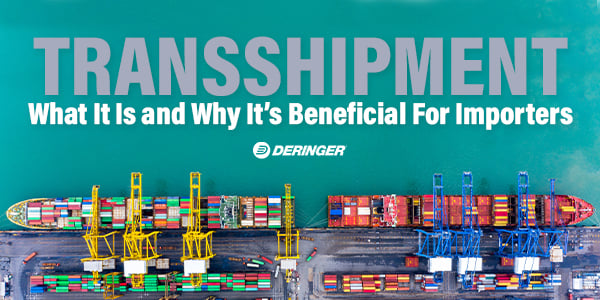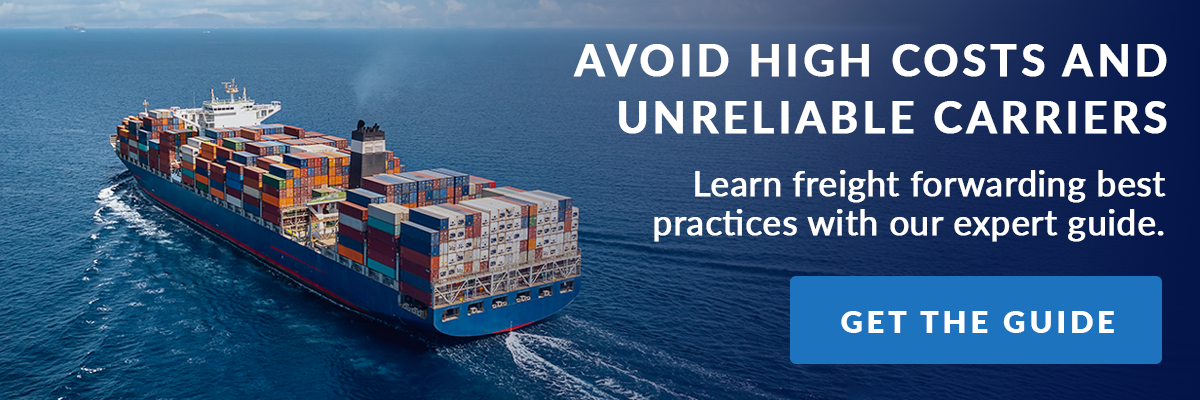
The business of international imports boils down to balancing time and money. The time it takes to ship items and the investment made in the process determine the difference between profit and loss.
Shipping lines typically charge more for faster transit times, whereas slower transit tends to be more affordable. How the goods are shipped also plays an important role in evaluating cost. In particular, transshipping is an option that offers situational strategic control of the supply chain and financial savings in the end.
What Does the Term Transshipment Mean?
Transshipment is the method of shipping goods or containers to an intermediary destination and then continuing the shipping onto its final destination. For example, a set of goods may first be shipped via sea and then put into temporary storage before they are loaded onto different vessels for the next leg of their journey. Transshipment can be used for water-to-water shipments, sea-to-land, and railway break-of-gauges, where track-lines converge. The main defining factor of transshipment is temporary storage at the port.
What's the difference between freight and cargo? We have defined the key differences in this blog post.
The process of transshipment is similar to that of commercial airlines. Choosing a flight with a layover may be more affordable than a direct flight. Similarly, it might save money to use one airline for the first leg of the journey and then wait at the carrier’s hub for a flight from another airline to complete the trip. Sometimes it even makes sense to fly in the other direction for a bit because the flight saves money in the end. This process is beneficial to the airline carrier because it ensures the aircraft is filled to capacity. The same principles apply to international transshipping. Instead of people and their luggage, transshipping deals with freight.
What is a Transshipping Terminal?
The world has about 40 free-trade zones, and most of them host important transshipment terminals. Transshipment terminals are intermediate hubs within larger ports and serve as an area in the port where ship-to-ship transfers take place. Cranes offload incoming cargo vessels and then store containers in the transshipment storage yard until the ships for the cargo’s final destination arrive. Typical temporary storage time is one to three days, though it may be longer depending on the shipping lane.
What’s the Benefit of Transshipping?
First and foremost, transshipping is more affordable than direct shipping. If production and lead times are dialed in, importers and exporters can save a significant amount of money through transshipment. Shippers can also tactically use transshipping to slow down their supply chain to avoid warehouse costs. Many shippers don’t want a surplus of merchandise sitting in warehouses, so they may choose to slow down the shipping process by prolonging it using transshipping. Depending on the industry and optimal speed to market, shippers may allow the shipments to sit for days or even weeks in the stack at the transshipment terminal to reduce the number of goods needed for storage in the destination country.
Transshipping also allows for consolidation and deconsolidation. For example, the Ports of Rotterdam and Hamburg have extensive transshipment terminals where large shipments can be divided into smaller ones that are rerouted to various final destinations. The inverse is also true. Various smaller shipments can sit at the transshipment terminal, waiting to be consolidated into a larger shipment with the same destination port. Consolidation and deconsolidation can make the process of shipping more efficient and ultimately save shippers money.
RELATED CONTENT: TRANSSHIPPING BEST PRACTICES FOR IMPORTERS
Transshipping Conclusion
Importers can save money and avoid port restraints using transshipping. Shippers can also leverage transshipping to reduce the risk of demurrage and detention charges. It can also help cut down warehousing and personal costs, reducing the overall bottom line. All in all, effective transshipping strategies create a more flexible and agile supply chain.




